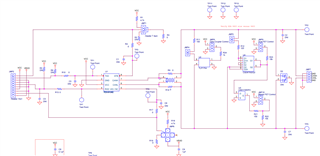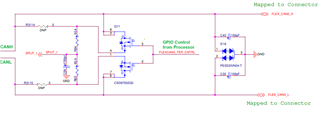Other Parts Discussed in Thread: ESD2CAN24, CSD, CSD17483F4, CSD87502Q2
Tool/software:
Hi Team,
My application includes a CAN interface, which requires GPIO control for enabling and disabling the 120ohm CAN termination.
Referred to the TI Implementation shared below for this
can selectable termination.opj

Taking this as a reference, implemented the CAN termination control using GPIO as shown below

Could you please review this implementation and share your feedback?

